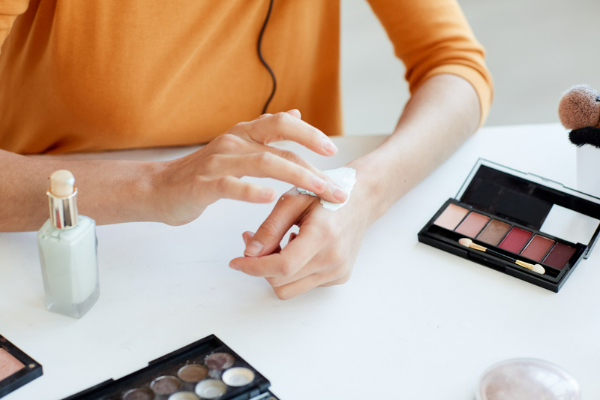
Feedback is the foundation upon which all businesses are built. Without user testing, companies won’t be able to determine what works and what doesn’t work about their product, feature, or service.
Whether it’s a startup or a large company, product launches can be incredibly stressful. There is the fear of failure, skepticism of the market, and concern about being ahead of the competition.
Fortunately, new product testing and reliable consumer data can diminish these doubts once and for all. Gathering valuable insights help inform future decisions about the direction of growth for the company.
There are many ways to discover what prospects want in a product experience before making any changes in future iterations. Here are five proven test-market methods to get an early read on your product to increase your chances of success.
Test-Marketing Methods
1. Talk to Your Audience
The most obvious but practical approach to testing new products would be to talk to your customers face-to-face. Once you have developed a prototype close to your desired output, it’s time to get real-world customer feedback.
Having a prototype is crucial because it gives people a concrete idea of how your product would look, feel, and function instead of just an abstract concept. By showing the product to your audience and chatting with them, you could pick up a wealth of information that would help developers know how the product can be improved for better adoption.
2. Give Free Samples
Aside from increasing exposure, offering product samples is also a great way to get feedback. Since they’re often smaller in scale, you can distribute and test your product on a larger demographic for a fraction of the cost.
When customers test a new product, they often note what they’ve liked or disliked about it and compare it with a competitor’s product. This allows you to learn more about your customers' needs and how to improve the product to give your business a competitive edge over similar offerings.
3. Use a Rough Prototype
The key to making this tactic successful is to use an unfinished prototype of your product. But why? It all comes down to simple psychology.
Conducting product tests with an “ugly” prototype opens the door to interesting conversations with your customers. People tend to be more reluctant to criticize or provide suggestions on improving a product if it looks too polished. However, people will have no qualms about sharing critical feedback if your product seems rough or unfinished.
Another reason why this method is beneficial for early-stage testing is that rough prototypes are cheaper and faster to produce. It also helps gauge if the public interest is high enough to justify further investment in product development.
4. Run Test Ads
Running test ads puts your new product in front of a sample of your target audience – helping you gain agile feedback that could refine your product design or messaging.
Follow these steps to run a successful test ad before the product launch:
- Set up a landing page containing the product’s value proposition and a registration form.
- Run a Google Ads campaign to test acquisition costs. Heat maps and visitor-recording software can also be used in conjunction with this to track user behavior.
- Take the registration emails and run online surveys to collect data on how your product, business, or promotional efforts could be improved.
This widespread method allows you to understand and segment your audiences to see how different groups feel about your product. Furthermore, it will enable you to quickly and frequently make data-backed decisions.
5. Simulated Test Marketing
Simulated Test Marketing (or STM) involves testing new products in a supervised and controlled environment. This qualitative technique aims to understand potential customers and the reasoning behind their product choices.
STM attempts to mimic real-world buyer experience. Moderators ask customers to select a product from a given number of options while answering a few questions about their purchase intent, preferences, and how much or how often they will buy a certain product.
Once this step is accomplished, customers will participate in an interview to provide insight into improving marketing strategies and optimizing a product’s performance.

Tips on How to Test a Product
Understand Your Goals
To develop a strategic test-marketing methodology, you must first define your research objectives and expectations. Here are a few questions you can ask yourself to get a clear picture of the study’s direction:
- What do you want to learn?
- How will your findings be used?
- How will your results guide your product launch?
Choose the Proper Testing Environment
To avoid any logistical issues, select a location that’s comfortable for all participants. Product testing environments are divided into two categories:
- Central Location Testing (CLT): Participants will follow a series of product tasks and answer moderator questions in a controlled setting such as a research facility.
- In-Home Usage Testing (IHUT): Unmoderated product testing wherein the product or prototype is sent to participants for at-home evaluation over a specified period.
Screen Your Respondents
To ensure that you only recruit the right people to participate in the study, use a screening questionnaire to filter out unqualified candidates. Your questionnaire should ask questions relating to your target audience's behaviors and demographics.
Create a Work Plan
Planning out your process beforehand ensures that the study runs smoothly. Create a project work plan that highlights responsible parties, key tasks, and deliverable dates.
Find a Product Testing Solution
Choose a solution with a solid product testing background. They should be able to provide the right equipment and support that you need to execute an effective new product testing project.
Experience Unparalleled Service and Technology for Your Product Test With CCam® focus
Conducting online or in-person focus groups? Testing out a new product on respondents? CCam focus is the premiere recording and streaming solution that delivers 360° HD video quality with crystal clear audio and dedicated tech support. Have a unified curation, storage, and sharing solution for your project today.


